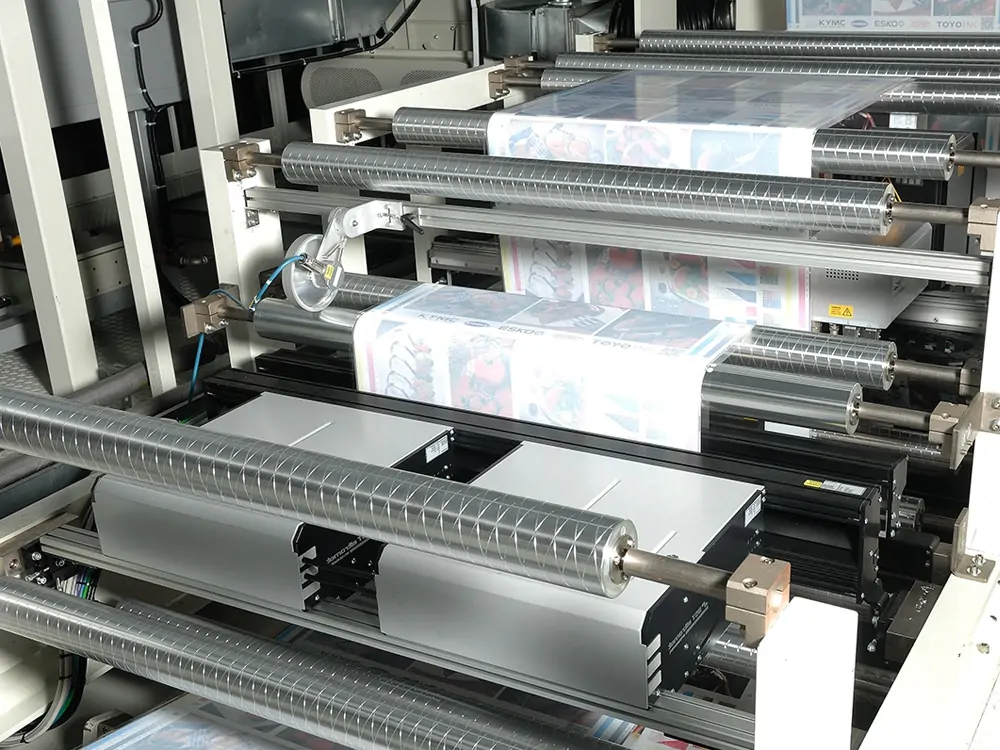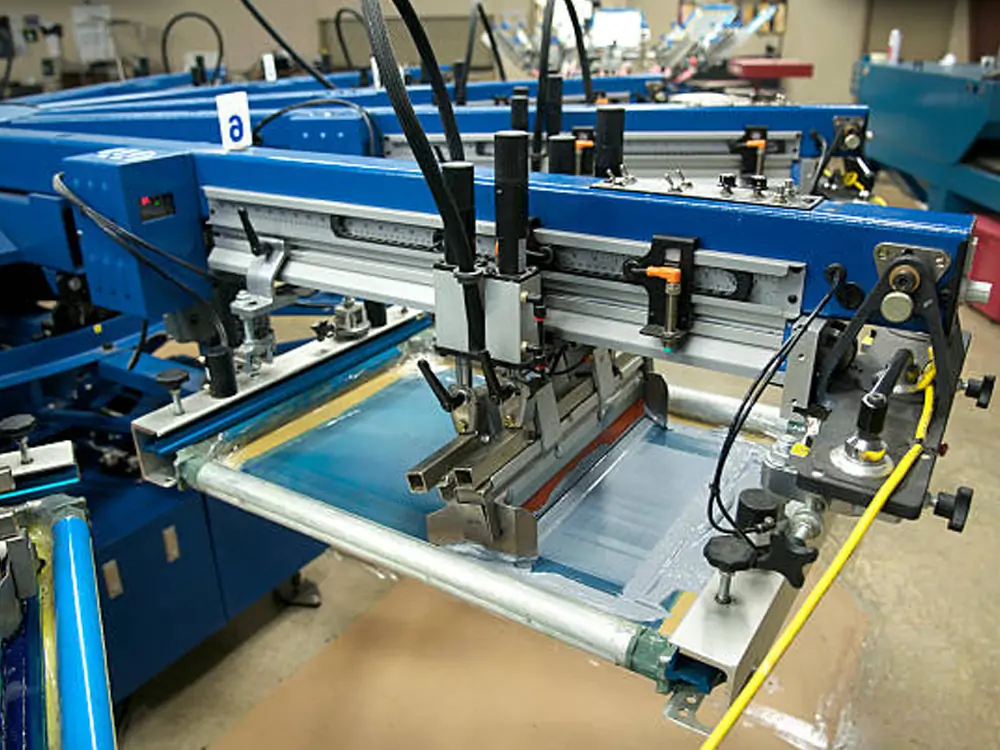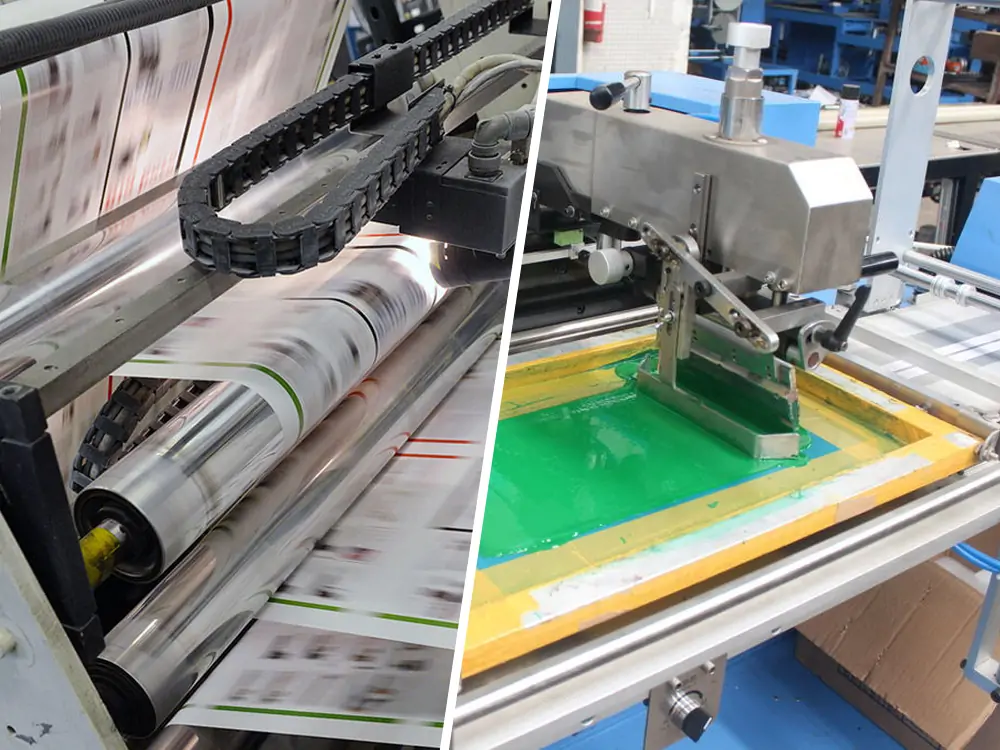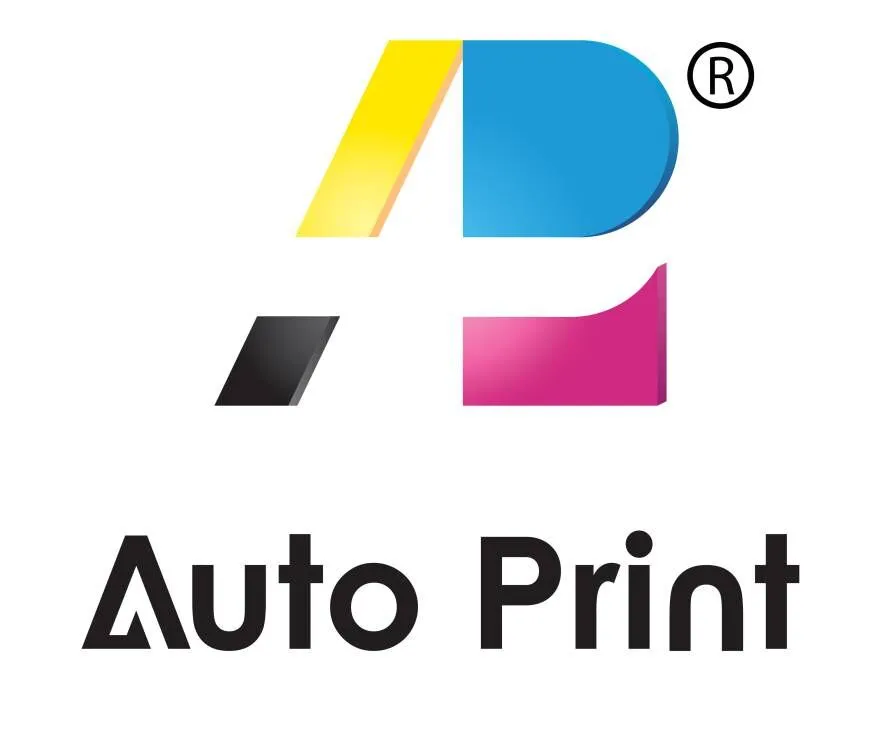Машины для трафаретной печати помогают создавать высококачественные и яркие рисунки на футболках. Существуют различные типы печатных машин, в том числе механические и пневматические. Эти два типа машин имеют множество отличий друг от друга. Их различия вызывают споры о механических и пневматических машинах для трафаретной печати.
Некоторые считают лучшим вариантом печатные машины с механическим приводом. Однако большинство считает, что пневматический - лучший вариант. Такое разделение мнений об этих двух машинах приводит к путанице. В этой статье я развею всю путаницу и объясню их различия, чтобы помочь вам выбрать лучшие машины. Итак, давайте начнем!
Обзор механических и пневматических печатных машин

Прежде чем обсуждать различия, давайте начнем с основ этих двух машин трафаретной печати.
Механические печатные машины работают с помощью моторов. Этот двигатель управляет движением всех деталей, включая скребок. Пневматические машины, напротив, используют сжатый воздух для перемещения деталей. Они более мощные и могут быстро выполнять массовые заказы. Кроме того, их дизайн отличается долговечностью и яркостью.
Принцип работы этих печатных машин одинаков. Например, они используют печатные сетки (устанавливаются на сетчатую раму), выдавливают и создают рисунки на материале. Материал (футболка) остается под сеткой. Этот экран остается закрепленным на сетчатая рама. Машина перемещает скребок по поверхности сита.
В результате чернила попадают на футболку под экраном. Помните, что экран содержит готовый дизайн. Чернила из конкретных рисунков попадают на футболку. В старых машинах рабочим приходилось перемещать скребок. Однако современные машины оснащены специальными деталями и системами для этих движений. Эти два типа различаются тем, как двигаются эти части машин.
В механических машинах используется специальный двигатель. Этот двигатель вращает шестеренку, перемещает скребок и заставляет машины работать. Этот двигатель работает от электричества. Пневматический трафаретные печатные машины совершенно разные. Чем? Они используют сжатый воздух (высокое давление) для перемещения всех частей и компонентов машин.
Интересно, что в пневматических машинах нет камеры для сжатого воздуха. Вместо этого используется отдельная компрессорная машина. Эта машина берет обычный воздух и сжимает его. Сжатый воздух поступает в машину по шлангам. Попадая в машину, он начинает вращать детали машины, что помогает создавать конструкции.
Различия между механическими и пневматическими печатными машинами
Вышеприведенный раздел поможет вам понять основы этих машин. Однако их выбор зависит от многих других факторов. Прежде чем принимать решение, вы должны понять их ключевые различия. Это поможет вам выбрать правильные трафаретные печатные машины. Давайте обсудим самые основные различия:

1- Источник питания
Между этими двумя машинами есть существенная разница. Механическая машина оснащена двигателем. Этот двигатель использует электричество для своей работы. Если вы используете эту машину, у вас должен быть источник электричества. Пневматические машины, напротив, нуждаются в сжатом воздухе, а также в электричестве.
В их работе используется сжатый воздух. Этот воздух поступает внутрь машин. Попадая внутрь, он приводит в движение шестеренки и скребок. Скребок распределяет чернила по рисунку на экране. Затем чернила попадают на рубашку под экраном. Таким образом, создается рисунок. Для работы этих машин требуется сжатый воздух.
2- Стоимость установки
Стоимость установки механической трафаретной печатной машины невелика. Почему? Потому что эти машины не зависят от внешних устройств. Все их детали и компоненты работают вместе. Все, что вам нужно сделать, - это подать электричество в качестве источника питания. Мотор начнет двигать детали, и вы получите рисунок. Однако пневматическая трафаретная печать сложнее.
Его установка более дорогостоящая, поскольку в нем используется отдельный воздушный компрессор (баллон). Этот компрессор подключается к трафаретной печатной машине через шланг. Сначала компрессор сжимает обычный воздух, а затем передает его в печатный станок. Вам понадобится компрессор и шланг. Кроме того, трафаретная печать и компрессоры потребляют электроэнергию, а это дополнительные расходы.
3- Пространство и размер производства
Печатные машины с механическим приводом компактны и невелики. В них нет крупных деталей и компонентов. Эти машины представляют собой отдельные устройства, которые можно разместить в любом месте. Поэтому я считаю их идеальным вариантом для начинающих. Они легко помещаются в комнатах или тесных помещениях, не занимая много места.
С другой стороны, машины с пневматическим приводом больше. В них есть отдельные компоненты, такие как воздушные цилиндры (компрессоры) и другие элементы. Эти дополнительные компоненты занимают больше места. Поэтому такие печатные машины идеально подходят для уже существующих предприятий. Что касается объема производства, то здесь пневматическая машина стоит особняком.
Они более мощные, а сжатый воздух обеспечивает постоянную мощность машин. Поэтому они могут создавать продукцию неизменно высокого качества в кратчайшие сроки. С другой стороны, механические машины имеют меньшую мощность. Они подходят для небольших производств. Вы можете приобрести механический приводной станок в качестве хорошей отправной точки.
4- Простота использования и скорость
Вообще, существует миф, что механические (ручные) трафаретные машины просты в эксплуатации. Однако я с этим не согласен, так как эта машина требует больше человеческих усилий. Кроме того, его скорость очень низкая. Она не подходит для тех, кому нужно выполнить большие проекты. На создание принтов на футболках уходит больше времени.
С другой стороны, пневматические машины в большей степени ориентированы на автоматизацию. Они требуют минимальных усилий со стороны человека. Они сжимают и перемещают детали, включая скребок, который создает рисунок. Что мне нравится в этих машинах, так это их скорость. Они могут делать сотни и тысячи отпечатков на футболках в кратчайшие сроки.
5- Тип и материал чернил
Печатная машина с механическим приводом имеет свои недостатки, когда речь заходит о типах чернил. Эта машина работает не со всеми видами чернил. Вместо этого она совместима с основными типами чернил, такими как пластизоль или чернила на водной основе.
Причина в том, что давление в этих машинах неравномерно. Ручные усилия подразумевают давление и перемещение скребок. Другие типы чернил могут растекаться по поверхности материала. При создании рисунков этим методом производители используют только хлопок и полиэстер. С другой стороны, пневматические печатные машины очень универсальны.
Благодаря сжатому воздуху они обеспечивают однородность. Таким образом, они могут использовать любой тип чернил для создания рисунков. Благодаря контролируемому давлению поток чернил остается очень гладким и равномерным. Эта печатная машина может легко создавать рисунки на любом материале или ткани.
6- Обслуживание и уровень шума
Печатные машины с пневматическим приводом требуют более тщательного обслуживания, поскольку в них работает больше компонентов. Они нуждаются в постоянной смазке и регулярных проверках. В этих машинах используются клапаны, цилиндры и компрессоры. Клапаны всегда находятся под высоким давлением, что может привести к их повреждению.
Поэтому вам придется их заменить. При работе эти машины также издают шипящий шум. Этот звук исходит от компрессора. С другой стороны, механические печатные машины работают тихо. Они не издают раздражающего шума и обеспечивают плавный ход печати.
Ручные машины имеют меньше деталей и компонентов и не требуют регулярного обслуживания. Поэтому они идеально подходят для тихой печати. Однако их небольшой уровень шума имеет и недостаток. Они не очень быстры и не могут эффективно обеспечивать крупносерийное производство. Прежде чем выбрать одну машину, необходимо проанализировать оба аспекта.
Какую печатную машину выбрать, механическую или пневматическую?

Механические и пневматические приводы не подходят для всех.
У этих двух машин есть уникальные преимущества. Механическая печатная машина подходит, если вы хотите печатать дизайны в небольших масштабах. Пневматическая печатная машина - идеальный вариант, если у вас налаженный бизнес и вы работаете в больших масштабах. Выбор зависит от вашего бюджета и требований.
Пневматические машины в некоторой степени автоматически. Их производственная эффективность не имеет себе равных. Это делает их отличным вариантом для крупномасштабного производства. Их скорость в сочетании с точностью обеспечивает выдающиеся впечатления от печати. С другой стороны, печатные машины с механическим приводом медлительны.
Я считаю, что они подходят для тех, кто занимается малым бизнесом. Например, если у вас небольшой магазин и вам не нужна массовая печать, эти машины подойдут вам лучше всего. Их первоначальная стоимость и обслуживание невелики, что является большим плюсом. Помните, что пневматические машины относятся к классу high-end, и их производительность превосходна.
Вы можете выбрать их, если хотите работать на профессиональном уровне. Однако их первоначальная стоимость очень высока, как и регулярное обслуживание. Если у вас ограниченный бюджет, лучше избегать их. Вы начинаете полиграфический бизнес с ограниченным бюджетом? Я рекомендую начать с механических печатных машин. Когда у вас появятся деньги, вы сможете приобрести пневматические машины для повышения производительности.
Заключение
Трудно назвать одну из этих двух машин лучшим вариантом, верно? Причина в том, что эти печатные машины отличаются по своему назначению. Машина с механическим приводом лучше всего подходит для небольших печатных работ. И наоборот, пневматические машины лучше всего подходят для крупномасштабного дизайна и печати на футболках.
Их основные принципы работы также отличаются друг от друга. В пневматической машине используется отдельный цилиндр и компрессор. Сжатый воздух поступает в машину. С другой стороны, ручные машины работают с помощью моторов. Прежде чем выбрать одну из этих двух печатных машин, необходимо тщательно проанализировать свои потребности.
